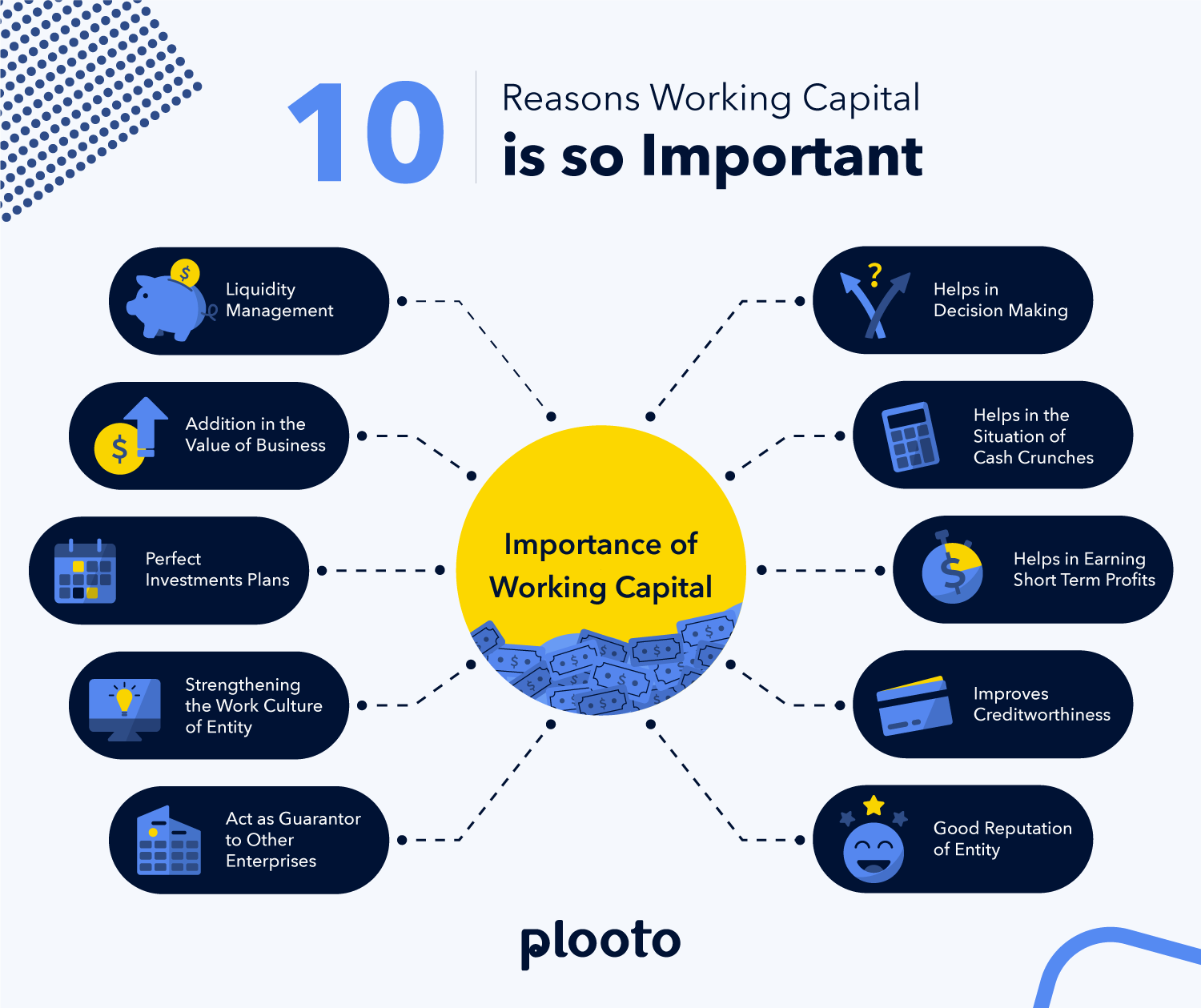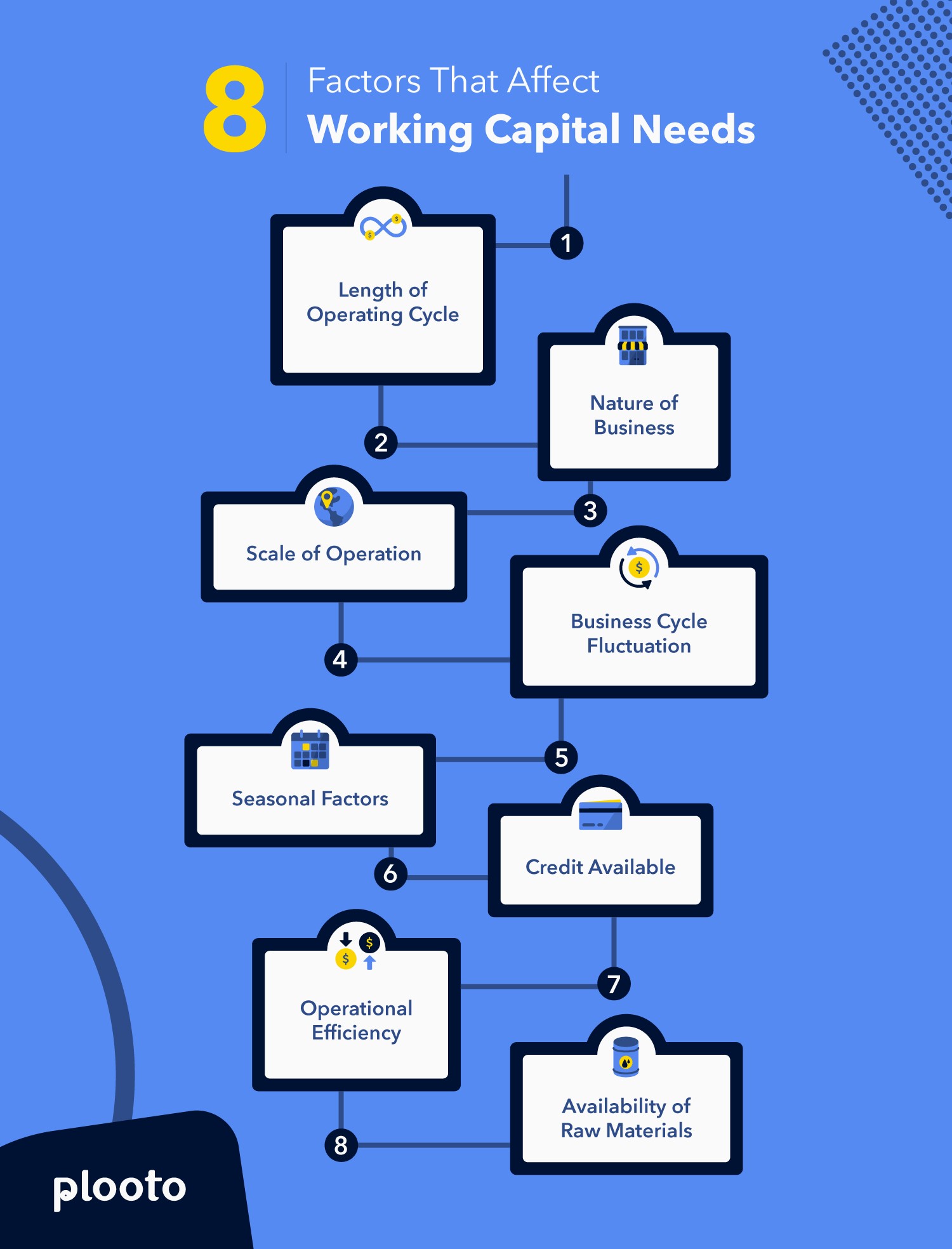
While there is no magic wand that will guarantee the financial success and stability of your business forever, effective working capital management (WCM) ensures you have enough cash to make regular payments, cover unexpected costs, and purchase basic materials used to produce goods.
Working capital is among the leading metrics for measuring a company's efficiency, liquidity, and overall health. According to a Deloitte poll, nearly half of C-suite and other executives say that managing working capital will be a high priority for their organizations in the year ahead, with 33.6% keeping it a top priority and 14.7% making it a higher priority.
Read on to learn actionable tips, tactics, and best practices for creating an effective working capital management strategy.
Sign up for a Free Trial today
Key Takeaways
- 6 ways effective working capital management can improve your business
- How working capital affects your company’s cash flow
- 18 best practices for improving working capital
- Risk and profitability: the strategies behind the 3 approaches to working capital management
- 15 working capital missteps to avoid
SHORTCUTS
What is working capital management?
Working capital management is an accounting strategy designed to ensure your business operates as efficiently as possible by increasing visibility into its assets and liabilities.
Working capital management analyzes the difference between a company's current assets—such as cash, accounts receivable/customers' unpaid bills, and inventories of raw materials and finished goods—and its current liabilities, such as accounts payable and debts.
The primary objectives of working capital management include optimizing the working capital operating cycle, minimizing the cost of cash spent on the working capital, and maximizing the return on current asset investments.
What are the 4 principal components of working capital?
Working capital reflects the results of various company activities, including revenue collection, debt management, inventory management, and vendor payments. This is because working capital includes inventory, accounts payable and receivable, cash, portions of debt due within the period of a year, and other short-term accounts.
The 4 key components of working capital are:
- Cash and cash equivalents
- Accounts receivable (AR)
- Accounts payable (AP)
- Inventory
Cash, AR, and inventory encompass your company's assets. Only AP belongs in the liability column. How you handle these four vital components determines how well you manage your working capital.
What is working capital leverage?
Working capital leverage (WCL) refers to the firm's success in managing its current assets and generating a higher return on investment. Leveraging effective working capital management processes through each of the four components can maximize cash flow, yielding substantial returns while reducing risks and costs.
How does working capital affect cash flow?
An increase in working capital means that more cash is invested in working capital, resulting in reduced cash flows. Firms with significant working capital requirements will find that their working capital grows as they do, and this growth will reduce their cash flows.
How do cash flow and working capital differ?
Cash flow and working capital tell different but important stories about your company’s health. Cash flow describes the money moving in and out of your business within a specific timeframe. However, cash flow alone tells you little about your company's net profits since it doesn't consider liabilities. Working capital takes into account your short-term liabilities and assets that can be converted to cash.
It's critical to consider both cash flow and working capital to determine your company's chances of surviving a financial crisis.

Is your business thriving, surviving, or failing? Why working capital management matters
Efficient working capital management can help streamline operations and improve the company's earnings and profitability by minimizing the cost of capital spent on the working capital and maximizing the return on current asset investments.
Whether an organization is thriving, surviving, or failing depends on profitability and liquidity. Highly profitable, highly liquid companies thrive, while businesses that see dips in profits but maintain a healthy level of liquidity within their operations survive. Businesses with persistent cash flow and profitability problems are on the path to failure. What separates companies that thrive, survive, or fail is effective working capital management.
Successfully managing working capital helps your business:
- Maintain adequate cash flow required to satisfy any day-to-day operational activities and operating costs for the short term and any bills or other obligations.
- Fuel business growth by helping you achieve a higher rate of return on your capital, increasing profitability, value appreciation, and liquidity.
- Optimally manage cash on hand and capitalize on your assets.
- Secure loans and attract investors by showing your business as a well-managed company, not a bankruptcy risk.
- Overcome periods of cash crunches.
- Make more informed, better decisions regarding planning and investments.

What factors impact working capital management?
Retail
Retail typically requires a low working capital because customers pay on the spot and retailers delay their payments to their suppliers. However, during gift-giving holiday seasons, having substantial working capital is crucial. Retail stores must prepare early for the tsunami of holiday shoppers, which necessitates enormous amounts of capital for inventory in advance.
Technology
Tech companies that only sell software through a website have little need for working capital. Since there is no physical product to keep in stock, and customers can download software at the click of a button, there is no need to worry about up-front inventory expenses.
Tech companies that manufacture and sell hardware, such as computers, phones, and their parts deal with substantial inventory. Hardware companies have working capital needs similar to retail businesses. Besides finished products for sale, these businesses must also stock the raw materials needed in manufacturing, which ties up working capital longer.
Manufacturing
Manufacturing companies typically require more working capital than businesses in other industries. The reason: manufacturing typically requires substantial up-front investments in machinery and equipment. Also, the longer it takes for the inventory to move through the production cycle, the more working capital is tied up in the company.
Service industry
Service verticals require less working capital as compared to retail or manufacturing. Why? In the service industry, there is no inventory, which makes up a large part of a company's assets and working capital.
Business cycle
Business cycles significantly affect the working capital needs of a business. Businesses typically grow during the expansion phase of a business cycle, thus requiring additional working capital.
These periods of increased business activity require additional funds to meet the time lag between collection and sales. Further, funds are also needed to purchase additional raw materials required to produce more goods for increased sales.
Downtimes allow the business to hold less working capital to carry out its operational activities.
Seasonal differences
Some businesses (particularly retail) need additional funds to purchase inventories during specific times of the year. Seasonal differences impact the working capital requirements of the company.
Operating cycle
The operating cycle is the time difference between converting raw materials into final products. Businesses with longer production cycles need more working capital to fund their operational activities.
Operational efficiency
Businesses with increased operational efficiency require fewer funds to be invested in working capital. The more a company can make in cash sales or the faster it can turn over inventories, the lower the amount of working capital it needs.
3 major approaches to managing working capital management
There are three major approaches to managing working capital: aggressive, moderate, and conservative. The effectiveness of these three approaches depends on risk and profitability.
Aggressive approach
With an aggressive approach, the company’s working capital investments are minimal. It is a high-risk, high-profit strategy.
Long-term funds are used to finance fixed assets and part of the permanent working capital. The remaining portion of the permanent working capital and the temporary working capital will be financed through short-term funding sources. This poses a high risk, but increased profitability since the finance cost of short-term funds are comparatively low.
Moderate approach
The moderate approach divides the total working capital into two sections — permanent and temporary. The permanent capital is the minimum amount used to perform business operations, and the temporary working capital is required for specific needs.
The temporary working capital will be funded by short term finances such as trade credit and short term loans. Financing of fixed assets such as machinery and infrastructure will be fulfilled through long-term funding. This strategy poses moderate risk and profitability.
Conservative approach
The conservative approach is one where the company invests high capital in existing assets. The conservative strategy relies on long-term financial instruments to source funds for fixed assets, permanent working capital and part of the temporary working capital. Since long-term finances are resistant to interest rate fluctuations, these prove to be low risk. Such finances also have low profitability.
18 Best practices for improving working capital
Improving working capital is a function of increasing assets and decreasing liabilities. It's essential that you:
Review gross margins
Consider increasing prices and cutting your direct costs. A small increase in profitability will improve your working capital in the long term.
Review overheads
Review your suppliers to identify less expensive vendors or negotiate with existing suppliers to get better terms. Cut out unnecessary luxuries.
Inject more capital
Make an additional investment in the business to improve working capital or seek outside investment.
Manage your invoicing and receivables
Try to invoice customers as soon as you’ve delivered the product or service, as delays in collecting sales invoices will reduce your working capital. Also, consider offering incentives to pay early.
Manage your payables and debt
In the long term, paying loans and vendors on time will improve liquidity and increase working capital.
Lease or rent equipment
Leasing and renting spread the cost of purchasing assets, leaving more cash in the bank and making managing cash flow less challenging.
Reduce inventory levels
Buy stock in lower quantities more frequently, and consider removing slow-moving items from your product lines. Increasing the inventory turnover rate increases the amount of cash you have available to spend.
Resolve disputes with customers
Disputes with customers prevent sales invoices from being turned into cash, so try to resolve customer disputes quickly. This will also help produce a healthy AP turnover ratio.
Perform thorough credit checks on new customers
You want to ensure your customers can afford to pay their bills.
Increase sales revenue
Consider expanding your product portfolio to generate more sales. Also, focus on increasing your sales force and exploring new marketing channels.
Optimize vendor relations
Ask about deals or discounts when working with vendors. If necessary, renegotiate payment terms once you become a solid customer.
Increase cash flow visibility
Automating and streamlining the invoice and reporting process will help you maintain a clear and accurate understanding of your company’s finances at any given time.
Meet debt obligations
Use electronic payment systems to ensure timely payments and avoid situations that delay payments and attract a penalty.
Plooto offers various payment collection options. Its pre-authorization debit agreement (PAD) automates payment collection while increasing cash flow forecasting visibility.
Automate cash flow management
Automating accounts receivable and accounts payable enables you to track cash inflows and outflows easily.
Plooto simplifies and automates cash flow management. Through a single integrated AP/AR platform, you can effortlessly manage the entire cash flow cycle.
Don’t finance fixed assets with working capital
A long-term loan allows you to pay for assets at a more controlled pace.
Sell off unessential, unproductive assets
Sell assets extraneous to your business or are tying up valuable cash. This can free up resources and improve your working capital.
Negotiate longer payment terms with vendors
This can give you more time to generate revenue and pay off your debts, which can help to improve your working capital.
Consider short-term financing
If you need a cash injection to improve your working capital, consider short-term financing options such as a business line of credit or a short-term loan.
How to manage a business with weak working capital
Writing in Forbes, Geanette Rodriguez-Ojeda, Forbes Councils Finance Member offers five strategies to help businesses overcome poor working capital:
- Review and optimize your software to support cash flow visibility.
- Identify and focus on those jobs that are profitable.
- Accelerate your cash conversion cycle.
- Negotiate vendor contracts and terms to slow down cash outflow.
- Review your metrics and check the volume of transactions your team is currently handling.
“Ultimately, the aim is to increase the speed of cash inflow and work towards the slowdown of cash outflow -- not to stop it altogether. Understand that you still have a business to operate, and stopping cash outflow can cause more damage than good.”
15 working capital missteps to avoid
- Not factoring in the working capital impact with day-to-day decisions
- Failing to think through the effects of unplanned expansion
- Not informing your business forecasting and production planning with regular analysis of your sales
- Not taking an advance for large orders that results in a shortage of funds
- Neglecting to account for short-term liabilities and contingencies
- Poor inventory management (read why inventory management is so important)
- Inaccurate production planning/delays in production
- Supply chain inefficiencies
- Not including off-balance sheet items
- Lack of budget control and planned spending
- Overly optimistic revenue forecasts
- Underestimating expenses
- Growing fixed assets slower than revenue
- Forecasting drastic changes in the cash conversion cycle not supported by data
- Underestimating working capital investment
Effective working capital management is critical to your company’s immediate and long-term success. It provides company-wide visibility of how well your business is managing its assets and liabilities and identifies areas for improvement. With an effective working capital management strategy, you’ll have the cash to pay your bills, achieve a higher rate of return on your capital, overcome cash crunches, and make more informed investment and planning decisions.
Back to shortcuts
How to calculate working capital
What is the difference between cash management and working capital?
Cash management tracks, analyzes and optimizes income and expenditures: how much money the company generates or consumes in a given period. However, cash flow management can only tell you a little about your company's net profits since it doesn't consider any liabilities.
Working capital management looks at the difference between the company's current assets that can be converted in a year and its current liabilities to determine its ability to meet financial obligations. The fundamental difference between working capital and cash is that working capital is a company’s financial cushion and a measure of a company's short-term financial health. Cash is just one asset a company can use to stay afloat financially.
How does business spend management (BSM) affect working capital?
Business spend management consists of processes, systems, and strategies businesses use to manage, analyze, and control costs and spending. Spend management also includes managing and optimizing supplier relationships.
BSN helps prevent unnecessary spending and maintain data accuracy throughout the billing lifecycle. Effective spend management enhances business profitability, reduces cash leakage, and minimizes supplier risk.
BSM helps reduce the cost of goods purchased, thus creating additional on-hand cash for the company. Spend management can decrease inventory costs by actively coordinating with other departments to monitor and balance inventory levels. Spend management also supports compliance, ensuring everyone in the business takes advantage of pre-negotiated rates, thus maximizing cash savings.
Spend management helps businesses purchase fewer items less frequently. Less cash going out the door improves liquidity and ultimately, working capital.
How does liquidity affect working capital?
Working Capital is a measure of the firm's liquidity. Liquidity measures the company's ability to pay off its bills when they are due, or how easily and effectively it can access the money it needs to cover its debts. Liquidity is calculated using the assets and liabilities listed on the balance sheet. Ample working capital shows healthy levels of liquidity. Assets that increase over time indicate the firm's growth.
Optimizing working capital can ease liquidity pressures in the immediate term. In the longer term, companies with optimized working capital management are better positioned to focus on growth.
What is the role of treasury in working capital management?
Treasury manages the company's financial resources to help meet the company's business objectives. Corporate treasury strategy includes using cash and other financial instruments to ensure enough cash is available for upcoming obligations. Treasury management optimizes the business's liquidity while mitigating financial and operational risks. Ultimately, Treasury management's primary aim is to ensure that the company always has access to the cash required to operate and uses surplus cash efficiently.
By working with other departments — such as AP, AR, and procurement — treasury can drive improvements to the cash conversion cycle and unlock the company’s working capital.
Because treasury typically seeks global visibility and control over cash positions, payments activity, and general financial workflows, they are in the perfect position to evaluate and influence high-level working capital decisions.
FREQUENTLY ASKED QUESTIONS
What is working capital?
Working capital is the difference between a company's current assets—such as cash, accounts receivable/customers' unpaid bills, and inventories of raw materials and finished goods—and its current liabilities, such as accounts payable and debts.
What are the types of working capital management?
Gross Working Capital, Net Working Capital, Permanent Working Capital, Temporary Working Capital, Regular Working Capital, Reserve Margin Working Capital, Seasonal Working Capital, Special Working Capital.
What are the advantages of working capital?
Working capital is used to fund daily operations and meet short-term obligations. If a company has enough working capital, it can continue to pay its employees and suppliers and meet other obligations, such as interest payments and taxes, even if it runs into cash flow challenges.
CHAPTERS
00 Why Effective Working Capital Management Can Improve Your Entire Business
01 How to Ignite Your Company’s Growth With Working Capital
02 Proven Strategies for Optimizing Your Cash Management
03 Unlock the Power of Spend Management: A Guide for Small and Mid-Size Businesses
04 Liquidity Management Is Crucial to Succeeding in Today’s Hyper-Fast Environment












